
Parthiv Haldipur
@haldipur.bsky.social
Developmental neurobiologist working on human cerebellar development and disease.📍Seattle, Washington
Pinned
Parthiv Haldipur
@haldipur.bsky.social
· Apr 22

Mapping the developmental profile of ventricular zone–derived neurons in the human cerebellum | PNAS
The cerebellar ventricular zone (VZ) is the primary source of progenitors that generate
cerebellar GABAergic neurons, including Purkinje cells (PCs...
www.pnas.org
It’s been a hectic few days, here’s a quick thread on our latest endeavour exploring GABAergic neurogenesis in the human cerebellum published in @pnas.org. Key takeaways: Purkinje cells are born very early in human development — much earlier than previously appreciated. www.pnas.org/doi/10.1073/...
Reposted by Parthiv Haldipur
Beautiful work from James Li’s lab, out in @natneuro.nature.com, dissecting the role of FOXP genes [mostly, FOXP1 and FOXP2] in regulating Purkinje cell diversity and cerebellar hemisphere developnent
🧪🧠🧬
www.nature.com/articles/s41...
🧪🧠🧬
www.nature.com/articles/s41...

FOXP genes regulate Purkinje cell diversity and cerebellar morphogenesis - Nature Neuroscience
The Li lab mapped molecularly distinct Purkinje cell (PC) subtypes in 3D and linked them to adult cerebellar architecture. They found that Foxp1/Foxp2 are essential for PC diversity and that Foxp1+ PC...
www.nature.com
August 19, 2025 at 11:37 AM
Beautiful work from James Li’s lab, out in @natneuro.nature.com, dissecting the role of FOXP genes [mostly, FOXP1 and FOXP2] in regulating Purkinje cell diversity and cerebellar hemisphere developnent
🧪🧠🧬
www.nature.com/articles/s41...
🧪🧠🧬
www.nature.com/articles/s41...
Reposted by Parthiv Haldipur
Sarah characteristically turning a bonkers story into a fascinating one.
Americans put sugar in all kinds of dishes that don’t require it. And one of the main reasons for this national aberration is … Prohibition. 🧵
Aside from anything else ...who the fuck puts sugar in their pasta sauce?
May 25, 2025 at 9:24 AM
Sarah characteristically turning a bonkers story into a fascinating one.
Reposted by Parthiv Haldipur
New preprint alert 📣
#Cerebellum, organoid, autism & brain evolution 🧪 🧫🧠🧬
Collaboration with G. Testa; fruit of years of work by smart students, led by postdoc Davide Aprile. Organoids to understand better the developmental basis of autism (focus: CHD8) & sapiens brain evolution (focus: CADPS2) 🧵
#Cerebellum, organoid, autism & brain evolution 🧪 🧫🧠🧬
Collaboration with G. Testa; fruit of years of work by smart students, led by postdoc Davide Aprile. Organoids to understand better the developmental basis of autism (focus: CHD8) & sapiens brain evolution (focus: CADPS2) 🧵

Benchmarking cerebellar organoids to model autism spectrum disorder and human brain evolution
While cortical organoids have been used to model different facets of neurodevelopmental conditions and human brain evolution, cerebellar organoids have not yet featured so prominently in the same cont...
www.biorxiv.org
May 16, 2025 at 11:08 AM
New preprint alert 📣
#Cerebellum, organoid, autism & brain evolution 🧪 🧫🧠🧬
Collaboration with G. Testa; fruit of years of work by smart students, led by postdoc Davide Aprile. Organoids to understand better the developmental basis of autism (focus: CHD8) & sapiens brain evolution (focus: CADPS2) 🧵
#Cerebellum, organoid, autism & brain evolution 🧪 🧫🧠🧬
Collaboration with G. Testa; fruit of years of work by smart students, led by postdoc Davide Aprile. Organoids to understand better the developmental basis of autism (focus: CHD8) & sapiens brain evolution (focus: CADPS2) 🧵
Reposted by Parthiv Haldipur
Thrilled to share our latest study out in @natureportfolio.nature.com led by the fantastically talented Jing Liu. Our study provides insight into a long standing question in biology: What molecular features make us uniquely human and how do these function? www.nature.com/articles/s41...
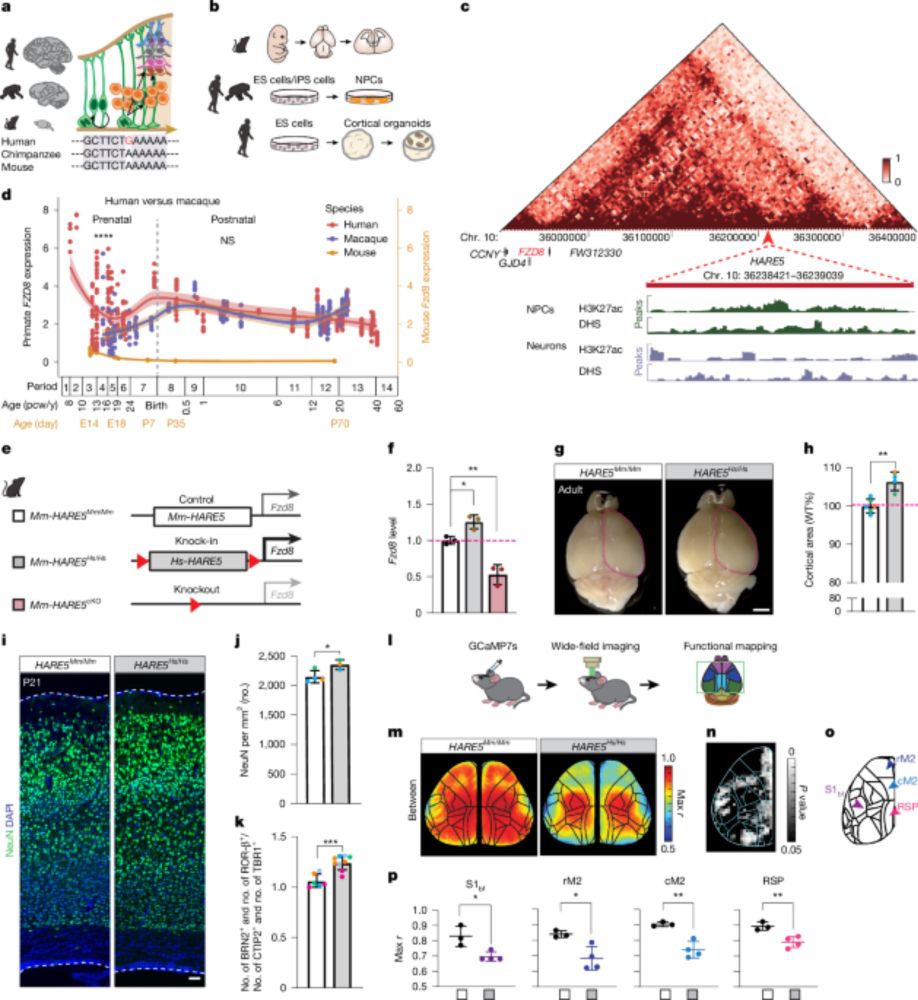
A human-specific enhancer fine-tunes radial glia potency and corticogenesis - Nature
HARE5, a human accelerated region enhancer, modulates cortical development by influencing neural progenitor cell behaviour, leading to an enlarged neocortex with increased functional independence betw...
www.nature.com
May 14, 2025 at 4:09 PM
Thrilled to share our latest study out in @natureportfolio.nature.com led by the fantastically talented Jing Liu. Our study provides insight into a long standing question in biology: What molecular features make us uniquely human and how do these function? www.nature.com/articles/s41...
Reposted by Parthiv Haldipur
Happy 99th birthday to the man who gave voice to the wild. 🎉
Sir David Attenborough, thank you for a lifetime dedicated to the natural world, and for sharing its story with wisdom, wonder, and grace.
You've inspired generations to fall in love with nature.
Sir David Attenborough, thank you for a lifetime dedicated to the natural world, and for sharing its story with wisdom, wonder, and grace.
You've inspired generations to fall in love with nature.
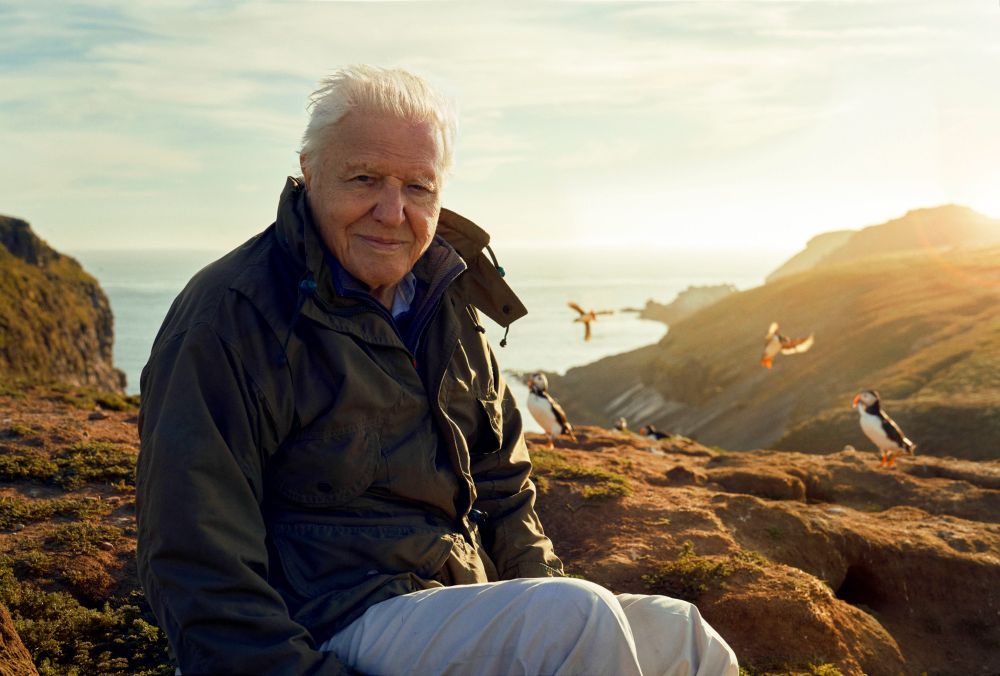
May 8, 2025 at 7:09 AM
Happy 99th birthday to the man who gave voice to the wild. 🎉
Sir David Attenborough, thank you for a lifetime dedicated to the natural world, and for sharing its story with wisdom, wonder, and grace.
You've inspired generations to fall in love with nature.
Sir David Attenborough, thank you for a lifetime dedicated to the natural world, and for sharing its story with wisdom, wonder, and grace.
You've inspired generations to fall in love with nature.
Reposted by Parthiv Haldipur
My first post on Bluesky! Very excited to share our work just published in @science.org. We find that “Interphase cell morphology defines the mode, symmetry, and outcome of mitosis” - in angiogenesis and other tissues! www.science.org/doi/abs/10.1... www.science.org/doi/abs/10.1...
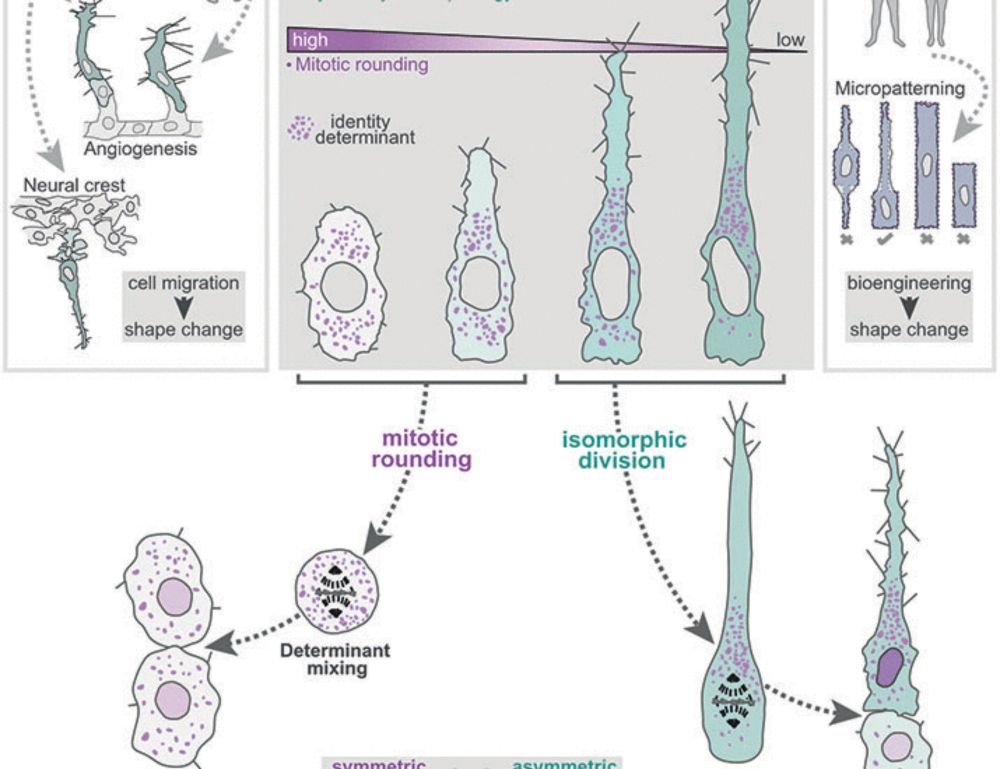
Interphase cell morphology defines the mode, symmetry, and outcome of mitosis
During tissue formation, dynamic cell shape changes drive morphogenesis while asymmetric divisions create cellular diversity. We found that the shifts in cell morphology that shape tissues could conco...
www.science.org
May 6, 2025 at 8:39 PM
My first post on Bluesky! Very excited to share our work just published in @science.org. We find that “Interphase cell morphology defines the mode, symmetry, and outcome of mitosis” - in angiogenesis and other tissues! www.science.org/doi/abs/10.1... www.science.org/doi/abs/10.1...
Reposted by Parthiv Haldipur
Great study by @nataliabaumann.bsky.social @djabaudon.bsky.social & collaborators, showing how regional differences in progenitor metabolism shape brain growth during development
@cp-cell.bsky.social
www.cell.com/cell/abstrac...
@cp-cell.bsky.social
www.cell.com/cell/abstrac...

Regional differences in progenitor metabolism shape brain growth during development
Brain-wide birthdate mapping reveals that while hindbrain neurogenesis is transient,
forebrain neurogenesis is temporally sustained through spatiotemporal regulation of
progenitor mitochondrial functi...
www.cell.com
May 1, 2025 at 2:11 PM
Great study by @nataliabaumann.bsky.social @djabaudon.bsky.social & collaborators, showing how regional differences in progenitor metabolism shape brain growth during development
@cp-cell.bsky.social
www.cell.com/cell/abstrac...
@cp-cell.bsky.social
www.cell.com/cell/abstrac...
Reposted by Parthiv Haldipur
🤩 paper on CNS fibroblasts in leptomeninges medulloblastoma metastasis from Michael D. Taylor's group co-led by Namal Abeysundara, Alexandra Rasnitsyn, & Vernon Fong in @natcellbio.nature.com - more evidence that CNS fibroblasts are a 🔑 player in 🧠 tumor growth 🧪 www.nature.com/articles/s41...

April 24, 2025 at 12:32 PM
🤩 paper on CNS fibroblasts in leptomeninges medulloblastoma metastasis from Michael D. Taylor's group co-led by Namal Abeysundara, Alexandra Rasnitsyn, & Vernon Fong in @natcellbio.nature.com - more evidence that CNS fibroblasts are a 🔑 player in 🧠 tumor growth 🧪 www.nature.com/articles/s41...
It’s been a hectic few days, here’s a quick thread on our latest endeavour exploring GABAergic neurogenesis in the human cerebellum published in @pnas.org. Key takeaways: Purkinje cells are born very early in human development — much earlier than previously appreciated. www.pnas.org/doi/10.1073/...

Mapping the developmental profile of ventricular zone–derived neurons in the human cerebellum | PNAS
The cerebellar ventricular zone (VZ) is the primary source of progenitors that generate
cerebellar GABAergic neurons, including Purkinje cells (PCs...
www.pnas.org
April 22, 2025 at 7:58 PM
It’s been a hectic few days, here’s a quick thread on our latest endeavour exploring GABAergic neurogenesis in the human cerebellum published in @pnas.org. Key takeaways: Purkinje cells are born very early in human development — much earlier than previously appreciated. www.pnas.org/doi/10.1073/...
Reposted by Parthiv Haldipur
Inspired by Cajal, the Hansel lab’s new work in @eLife provides a comparative histological analysis of human and mouse Purkinje cell morphology. Following our 2023 study, we detail differences of scale and kind between the neurons of the two species 🧵⬇️
elifesciences.org/articles/105...
elifesciences.org/articles/105...
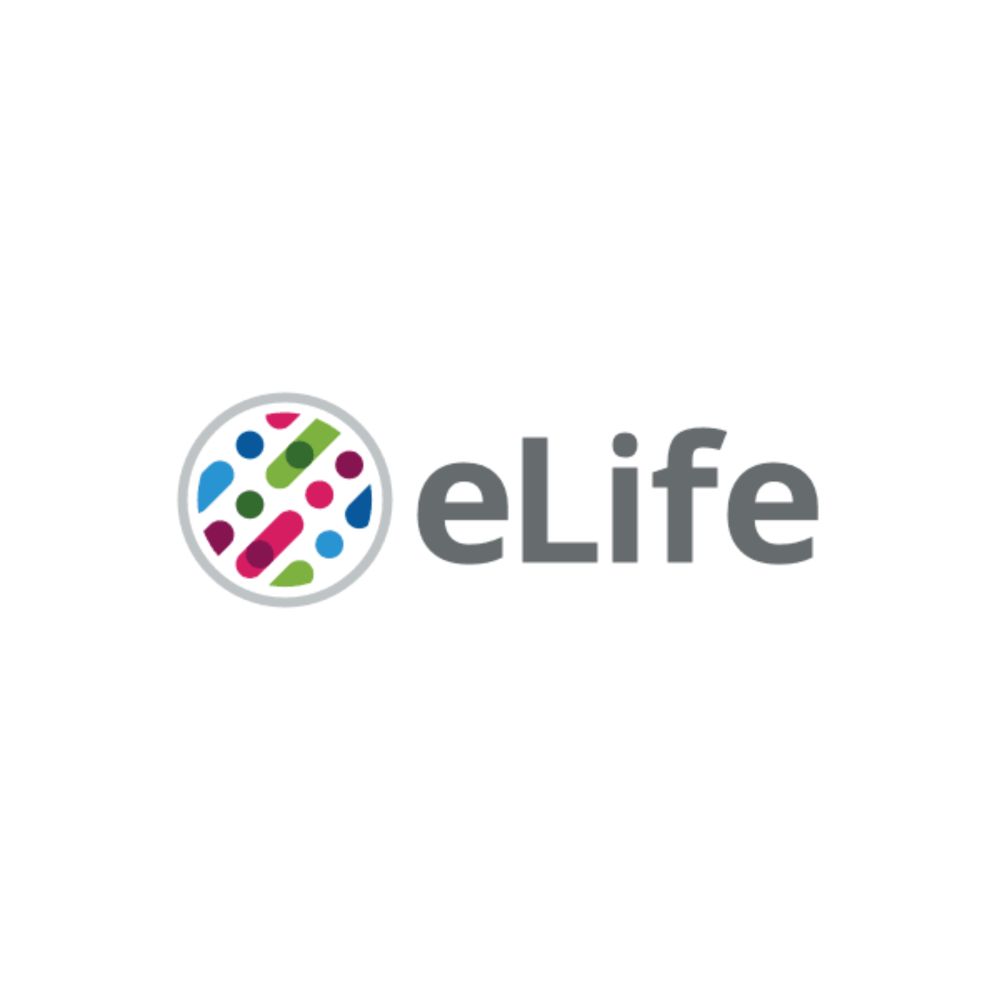
Non-allometric expansion and enhanced compartmentalization of Purkinje cell dendrites in the human cerebellum
A comparative study of Purkinje dendrite morphology, input arrangement, and regional subtype distribution shows human cells evade constraint by cortical thickness to be both quantitatively and qualita...
elifesciences.org
April 18, 2025 at 3:04 PM
Inspired by Cajal, the Hansel lab’s new work in @eLife provides a comparative histological analysis of human and mouse Purkinje cell morphology. Following our 2023 study, we detail differences of scale and kind between the neurons of the two species 🧵⬇️
elifesciences.org/articles/105...
elifesciences.org/articles/105...
Reposted by Parthiv Haldipur
How does gene regulation shape brain evolution? Our new preprint dives into this question in the context of mammalian cerebellum development! rb.gy/dbcxjz
Led by @ioansarr.bsky.social, @marisepp.bsky.social and @tyamadat.bsky.social, in collaboration with @steinaerts.bsky.social
Led by @ioansarr.bsky.social, @marisepp.bsky.social and @tyamadat.bsky.social, in collaboration with @steinaerts.bsky.social
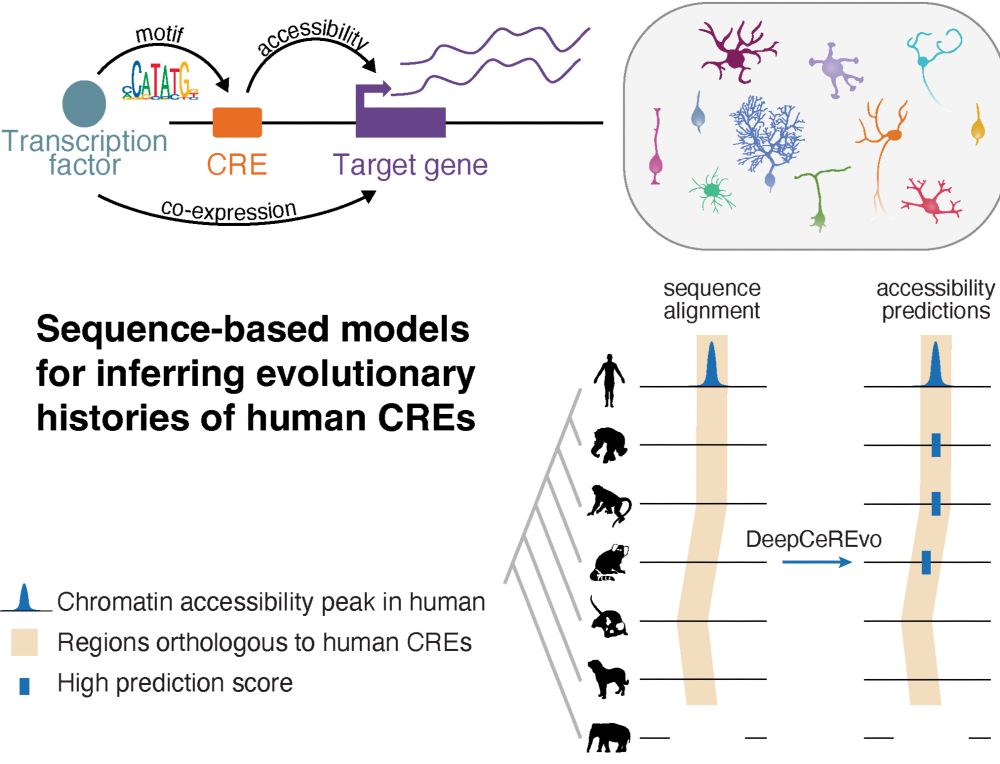
March 16, 2025 at 10:31 AM
How does gene regulation shape brain evolution? Our new preprint dives into this question in the context of mammalian cerebellum development! rb.gy/dbcxjz
Led by @ioansarr.bsky.social, @marisepp.bsky.social and @tyamadat.bsky.social, in collaboration with @steinaerts.bsky.social
Led by @ioansarr.bsky.social, @marisepp.bsky.social and @tyamadat.bsky.social, in collaboration with @steinaerts.bsky.social
Reposted by Parthiv Haldipur
Please be a kind and considerate reviewer, even if you have criticism (think of the first author who poured their heart and soul into the work). Also, read the paper or revisions and make sure you don't suggest experiments that are already in the manuscript... 😂
What is with journal paper reviewers these days? As another reviewer doing cross discussions (cough, Science), I’m seeing a lot of hostile, aggressive comments. You know, you can package things kindly if you think you found a mistake? Literally I’m having to flag inappropriate comments to editor 🙃🤯
February 4, 2025 at 7:31 PM
Please be a kind and considerate reviewer, even if you have criticism (think of the first author who poured their heart and soul into the work). Also, read the paper or revisions and make sure you don't suggest experiments that are already in the manuscript... 😂
Reposted by Parthiv Haldipur
Great paper by @noonanlab.bsky.social, now out in Cell, on the role of “human accelerated regions” in human brain evolution; showing they altered the expression of ancestral gene targets
shared between human and chimpanzee rather than by gained new targets in human 🧪🧠🧬
www.cell.com/cell/abstrac...
shared between human and chimpanzee rather than by gained new targets in human 🧪🧠🧬
www.cell.com/cell/abstrac...

Resolving the three-dimensional interactome of human accelerated regions during human and chimpanzee neurodevelopment
Human accelerated regions (HARs) have been implicated in human brain evolution with
limited understanding of the biological processes they alter. This study reports that
HARs influenced brain evolutio...
www.cell.com
January 31, 2025 at 7:21 AM
Great paper by @noonanlab.bsky.social, now out in Cell, on the role of “human accelerated regions” in human brain evolution; showing they altered the expression of ancestral gene targets
shared between human and chimpanzee rather than by gained new targets in human 🧪🧠🧬
www.cell.com/cell/abstrac...
shared between human and chimpanzee rather than by gained new targets in human 🧪🧠🧬
www.cell.com/cell/abstrac...
Reposted by Parthiv Haldipur
Someone in 1st Century India got human embryonic limb development perfectly right. The progressive emergence of parts, even the timing, exactly right. Today, I'll start a new thing about the ancient origins developmental biology, the science of embryos. 🧵1/15 #TheLongBibliography
#DevBiol
#SciHist
#DevBiol
#SciHist
January 25, 2025 at 5:41 PM
Someone in 1st Century India got human embryonic limb development perfectly right. The progressive emergence of parts, even the timing, exactly right. Today, I'll start a new thing about the ancient origins developmental biology, the science of embryos. 🧵1/15 #TheLongBibliography
#DevBiol
#SciHist
#DevBiol
#SciHist
Reposted by Parthiv Haldipur
It's becoming increasingly apparent that people with knowledge need to respond quickly and forcefully in the face of false rumors. (Recent "drone" hysteria in New Jersey is just one example.)
Here, Nicole Rust on the necessity of scientific outreach in 2025: www.thetransmitter.org/craft-and-ca...
Here, Nicole Rust on the necessity of scientific outreach in 2025: www.thetransmitter.org/craft-and-ca...

In your New Year’s resolutions for 2025, consider public outreach
If every person in the neuroscience community committed to doing one thing, imagine the cumulative difference it would make.
www.thetransmitter.org
January 3, 2025 at 3:00 PM
It's becoming increasingly apparent that people with knowledge need to respond quickly and forcefully in the face of false rumors. (Recent "drone" hysteria in New Jersey is just one example.)
Here, Nicole Rust on the necessity of scientific outreach in 2025: www.thetransmitter.org/craft-and-ca...
Here, Nicole Rust on the necessity of scientific outreach in 2025: www.thetransmitter.org/craft-and-ca...
Reposted by Parthiv Haldipur
ZIC1 is a context-dependent medulloblastoma driver in the rhombic lip
www.nature.com/articles/s41...
www.nature.com/articles/s41...

ZIC1 is a context-dependent medulloblastoma driver in the rhombic lip - Nature Genetics
Analysis of medulloblastomas in humans and mice shows that the functional consequences of ZIC1 mutations are exquisitely dependent on the cells of origin that give rise to different subgroups of medul...
www.nature.com
January 3, 2025 at 3:46 PM
ZIC1 is a context-dependent medulloblastoma driver in the rhombic lip
www.nature.com/articles/s41...
www.nature.com/articles/s41...
Reposted by Parthiv Haldipur
Excited to announce the publication of our team's work suggesting a new framework for understanding hashtag#synapse hashtag#development and diversity in the mammalian hashtag#brain in Nature Neuroscience rdcu.be/d2100 🧵

Stepwise molecular specification of excitatory synapse diversity onto cerebellar Purkinje cells
Nature Neuroscience - Brain function requires the formation of diverse and specific synapses. The authors show that the molecular code specifying excitatory connectivity on Purkinje cells evolves...
rdcu.be
December 10, 2024 at 1:44 PM
Excited to announce the publication of our team's work suggesting a new framework for understanding hashtag#synapse hashtag#development and diversity in the mammalian hashtag#brain in Nature Neuroscience rdcu.be/d2100 🧵
Reposted by Parthiv Haldipur
We're excited to share our comprehensive protocol for generating human cerebellar #organoids, addressing the many requests we've received from the scientific community! Congratulations to Alex Atamian, @marcellabirtele.bsky.social, and Negar Hosseini! rdcu.be/d13Zu @natureportfolio.bsky.social

Generation and long-term culture of human cerebellar organoids from pluripotent stem cells
Nature Protocols - Generation and long-term culture of a human pluripotent stem cell-derived human cerebellar organoid model, which successfully replicates the cellular diversity of the fetal...
rdcu.be
December 3, 2024 at 1:18 AM
We're excited to share our comprehensive protocol for generating human cerebellar #organoids, addressing the many requests we've received from the scientific community! Congratulations to Alex Atamian, @marcellabirtele.bsky.social, and Negar Hosseini! rdcu.be/d13Zu @natureportfolio.bsky.social
Reposted by Parthiv Haldipur
Latest paper in Nature this week: an atlas integrating 36 single-cell datasets spanning 26 protocols for making neural #organoids
Effort led by B. Treutlein, @fabiantheis.bsky.social and @graycamplab.bsky.social
Effort led by B. Treutlein, @fabiantheis.bsky.social and @graycamplab.bsky.social

November 21, 2024 at 7:25 PM
Latest paper in Nature this week: an atlas integrating 36 single-cell datasets spanning 26 protocols for making neural #organoids
Effort led by B. Treutlein, @fabiantheis.bsky.social and @graycamplab.bsky.social
Effort led by B. Treutlein, @fabiantheis.bsky.social and @graycamplab.bsky.social
Reposted by Parthiv Haldipur
Annual morbidity in the 20th century, before and after vaccines:
Measles:
Before: 530,000, After: 47
Mumps:
Before: 160,000, After: 429
Rubella:
Before: 50,000, After: 3
Diphtheria:
Before: 20,000, After: 2
Smallpox:
Before: 30,000, After: 0
Polio:
Before: 16,000, After: 0
Measles:
Before: 530,000, After: 47
Mumps:
Before: 160,000, After: 429
Rubella:
Before: 50,000, After: 3
Diphtheria:
Before: 20,000, After: 2
Smallpox:
Before: 30,000, After: 0
Polio:
Before: 16,000, After: 0
November 17, 2024 at 4:25 PM
Annual morbidity in the 20th century, before and after vaccines:
Measles:
Before: 530,000, After: 47
Mumps:
Before: 160,000, After: 429
Rubella:
Before: 50,000, After: 3
Diphtheria:
Before: 20,000, After: 2
Smallpox:
Before: 30,000, After: 0
Polio:
Before: 16,000, After: 0
Measles:
Before: 530,000, After: 47
Mumps:
Before: 160,000, After: 429
Rubella:
Before: 50,000, After: 3
Diphtheria:
Before: 20,000, After: 2
Smallpox:
Before: 30,000, After: 0
Polio:
Before: 16,000, After: 0
Reposted by Parthiv Haldipur
I'm thrilled to announce that the review I wrote with
@brainevodevo.bsky.social
is now online @Nature Review Neuroscience: www.nature.com/articles/s41... We cover mechanisms of prolonged human neuronal maturation, integrating lessons from model organisms with studies on species differences.
@brainevodevo.bsky.social
is now online @Nature Review Neuroscience: www.nature.com/articles/s41... We cover mechanisms of prolonged human neuronal maturation, integrating lessons from model organisms with studies on species differences.

Human neuronal maturation comes of age: cellular mechanisms and species differences - Nature Reviews...
Human cortical neurons undergo a protracted period of postmitotic maturation compared with those of other species. Wallace and Pollen review the cell-intrinsic and cell-extrinsic mechanisms that gover...
www.nature.com
December 14, 2023 at 8:49 PM
I'm thrilled to announce that the review I wrote with
@brainevodevo.bsky.social
is now online @Nature Review Neuroscience: www.nature.com/articles/s41... We cover mechanisms of prolonged human neuronal maturation, integrating lessons from model organisms with studies on species differences.
@brainevodevo.bsky.social
is now online @Nature Review Neuroscience: www.nature.com/articles/s41... We cover mechanisms of prolonged human neuronal maturation, integrating lessons from model organisms with studies on species differences.
Reposted by Parthiv Haldipur
Nice new #brainorganoid preprint from @knoblich-lab.bsky.social, providing evidence for generation of large portionsof fetal brain cells across several pluripotent stem cell lines, across 4 protocols. Very valuable resource for the field:
Excited to share our latest preprint (@biorxivpreprint) on brain organoid development. Lead by Julia Naas and Meritxell Balmaña (@txellbalmana) with Arndt von Haeseler, Christopher Esk (@christopher-esk.bsky.social) and colleagues across Vienna. @maxperutzlabs.bsky.social, @IMBA_Vienna, @CeMM_News.

Reconstitution of Human Brain Cell Diversity in Organoids via Four Protocols
Human brain organoids are powerful in vitro models for brain development and disease. However, their variability can complicate use in biomedical research and drug discovery. Both the specific protoco...
www.biorxiv.org
November 20, 2024 at 8:51 AM
Nice new #brainorganoid preprint from @knoblich-lab.bsky.social, providing evidence for generation of large portionsof fetal brain cells across several pluripotent stem cell lines, across 4 protocols. Very valuable resource for the field:
Reposted by Parthiv Haldipur
Hi Bluesky 🧪🧠,
Let me introduce my second postdoctoral piece published a couple of weeks ago, under the direction of @vanderhaeghenp2.bsky.social, with @franckp.bsky.social and Cécile Charrier, in #Neuron @cellpress.bsky.social 🧵:
doi.org/10.1016/j.ne...
#neuron #neoteny #human #SYNGAP1
Let me introduce my second postdoctoral piece published a couple of weeks ago, under the direction of @vanderhaeghenp2.bsky.social, with @franckp.bsky.social and Cécile Charrier, in #Neuron @cellpress.bsky.social 🧵:
doi.org/10.1016/j.ne...
#neuron #neoteny #human #SYNGAP1

Synaptic neoteny of human cortical neurons requires species-specific balancing of SRGAP2-SYNGAP1 cross-inhibition
Libé-Philippot et al. investigate the mechanisms underlying the prolonged synaptic
development characteristic of human cortical neurons. They demonstrate that the human-specific
genes SRGAP2B/C are re...
www.cell.com
November 18, 2024 at 5:08 PM
Hi Bluesky 🧪🧠,
Let me introduce my second postdoctoral piece published a couple of weeks ago, under the direction of @vanderhaeghenp2.bsky.social, with @franckp.bsky.social and Cécile Charrier, in #Neuron @cellpress.bsky.social 🧵:
doi.org/10.1016/j.ne...
#neuron #neoteny #human #SYNGAP1
Let me introduce my second postdoctoral piece published a couple of weeks ago, under the direction of @vanderhaeghenp2.bsky.social, with @franckp.bsky.social and Cécile Charrier, in #Neuron @cellpress.bsky.social 🧵:
doi.org/10.1016/j.ne...
#neuron #neoteny #human #SYNGAP1

